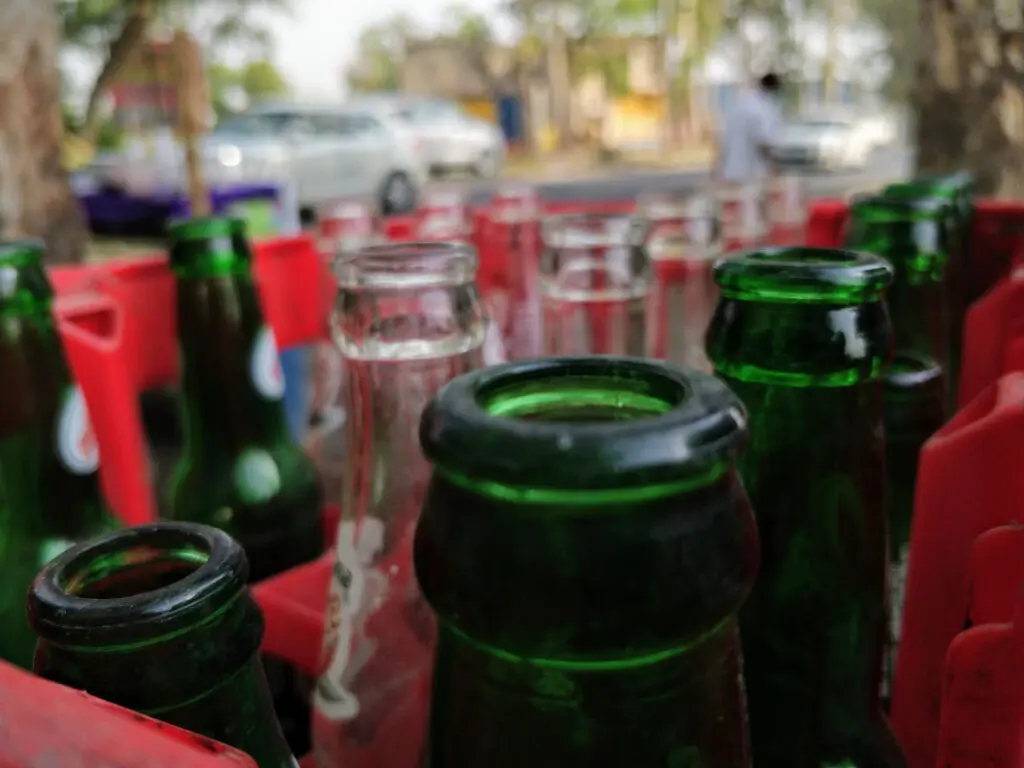The worldwide glass recycling market was worth over EUR 3.2 billion last year. Prospects for the near future are positive, building on an increase in deposit schemes, recycling awareness and cutting-edge technology.
This article was published in Recycling Technology >>
Glass counts as one of the oldest materials used by mankind. The world’s first glass bottles, for example, were uncovered in Mesopotamia (Asia) and date back to around 1500 BC. They were considered luxury items, used to store perfume, oil and other valuables.
Major glass production facilities emerged in the UK, France, Italy, Germany and Spain in the following 200 years. In fact, the skilled craftsmen manufacturing anything from stained glass windows for churches to vases and chandeliers were called ‘glass masters’ and became highly celebrated. So much so that they were allowed to enter the nobility.
Waste not
This is a far cry from the mass-produced and recklessly-littered beverage packaging we know today. Indeed, glass manufacture, which topped 130 million tonnes (including 743 billion bottles) worldwide in 2023, has become synonymous with consumerism.
While eco-conscious nations such as Finland, Norway and Switzerland are exceeding an 85% collection rate for glass bottles, there are plenty scoring barely half as well. That’s why, for example, an estimated 41 billion plastic and glass bottles and containers are landfilled or incinerated in Europe alone every year.
The average glass collection rate in the EU is 80%, according to latest available data from the Federation of European manufacturers of glass containers (FEVE).‘The vast majority of the almost 12 million tonnes collected goes back to remelt new bottles and jars,’ says the organisation’s secretary general Adeline Farrelly.
Apart from not wanting to waste a material that is infinitely recyclable, she points out that glass bottles would take up to 4 000 years to decompose in the outdoors. Farrelly adds that using end-of-life glass decreases the cost of energy by 3% for every 10% of cullet used in the manufacturing process.
Boosting the numbers
‘With a collection rate of less than 55%, Portugal is below the EU average,’ notes Tiago Moreira da Silva, co-ordinator of new glass recycling scheme Vidro+. He aims to reach a collection rate of 90% of glass packaging placed on the market for recycling by 2030.
Moreira da Silva considers Portugal to be a country with ‘the most potential’, seeing as glass production per capita is the highest in all of Europe – topping annual domestic demand fourfold.
Vidro+ will especially look to target glass coming from restaurants, bars/clubs and hotels. This segment comprises 90 232 establishments across Portugal, generating respectively 56%, 25% and 19% of glass waste.
Meanwhile, the US is lagging even further behind in recycling some 3.5 million tonnes per annum – that’s not even 35% of glass bottles and containers. As a result, around 9 million tonnes of glass falls through the cracks every year.
One of the best performers is the state of California, which has reached an 80% collection rate for glass. This is largely thanks to deposit schemes, a large collection network, a thriving recycling culture and close involvement with industry stakeholders.
Laser cutting
Technology is another important driver of recycling efficiency. A promising innovation comes from the University of Vigo in Spain, which has created a machine equipped with a laser programmed to cut discarded glass into new products.
The university’s research group LaserON created the solution for a recycling initiative called EverGLASS. It will run for three years, with a budget of EUR 3 million.
‘The current glass recycling process relies on mature technology housed in large centralised facilities, consuming substantial energy and incurring high transportation costs,’ explains Professor Juan Pou, one of the project co-ordinators.
His idea is to move towards a directly distributed recycling concept, with one machine inspired by modern-day laser morphing techniques. Before the transformation process, it converts the glass into glass powder.
‘EverGLASS places people at the forefront, offering flexibility and a much more sustainable glass processing method,’ the professor notes. Pou’s team is conducting laboratory tests with various types of glass. The next step will be testing, fine-tuning and teaming up with industry partners to build an industrial prototype of a glass recycling machine.
Prize-winning initiative
For now, the MeshFree simulation tool, which provides a virtual environment, is helping predict how the laser will handle the glass. Parameters will be optimised before physical implementation.
Pou explains the simulation is based on a numerical point cloud approach, allowing users to compute highly-complex tasks very quickly. It has already proved to be an asset in vehicle production. The professor argues that it makes sense to turn it around and enhance end-of-life systems too.
The LaserON initiative is backed by engineers, researchers and scientists from Slovakia, Germany and France. Their joint efforts have recently secured the 2024 Joseph von Fraunhofer Prize, plus EUR 50 000 in prize money.
Read the full article in Recycling Technology >>
Don't hesitate to contact us to share your input and ideas. Subscribe to the magazine or (free) newsletter.



